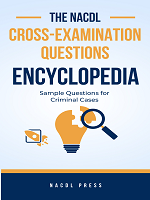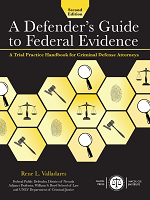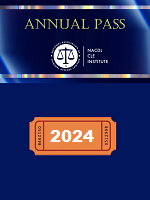Access to The Champion archive is one of many exclusive member benefits. It’s normally restricted to just NACDL members. However, this content, and others like it, is available to everyone in order to educate the public on why criminal justice reform is a necessity.
On May 23, 2016, the U.S. Supreme Court decided Foster v. Chatman,1 a Georgia case in which the justices considered whether the state’s “race neutral” explanations for using preemptory challenges to remove all of the African American jurors from a capital murder trial violated the Equal Protection Clause of the Fourteenth Amendment as interpreted in Batson v. Kentucky.2 Timothy Foster, an African American, was charged with capital murder. The jury found him guilty and assessed the death penalty.
Foster’s Batson claims were raised at trial, renewed on a motion for new trial, and unsuccessfully litigated on direct appeal. He then pursued the claims in a state habeas corpus proceeding. During the pendency of the habeas action, Foster sought, through the Georgia equivalent of a FOIA request, the files of the prosecutors who had represented the state at trial. The documents showed an organized effort to identify and exclude the African American jurors.
The evidence obtained was extensive. Recounting it in detail would far exceed the space allotted for this column, and a summary cannot do justice to what transpired during jury selection. I invite you to read the Supreme Court’s opinion, which sets out the evidence in great detail. Described in general terms, the evidence showed that the black prospective jurors were identified, labeled as definite strikes, and the four who remained after challenges for cause were removed by the state’s preemptory strikes. The so-called “race neutral” explanations given to the trial court for exercising the strikes rested on factors that the black jurors had in common with white members of the venire. The white jurors were not stricken.
Seven of the current eight U.S. Supreme Court members concluded that the newly presented evidence and an in-depth analysis of the reasons given by the prosecution for exercising the preemptory challenges to remove two of the black prospective jurors showed purposeful discrimination. The Court was “left with the firm conviction that the strikes of [the two jurors] were motivated in substantial part by discriminatory intent.”3
The Court’s action in Foster is significant for a number of reasons. Bucking its historical trend, the Court granted certiorari to review a decision of a state appellate court after a habeas proceeding without first having the issues sorted out in a federal habeas corpus action. Also, the Court concluded that the factual findings made in the state habeas corpus proceeding were not supported by the evidence, overcoming the stringent standard that “in the absence of exceptional circumstances, we defer to state court factual findings unless we conclude that they are clearly erroneous.” But, perhaps the most interesting aspect of the Court’s action was that the lone dissenter was Justice Thomas.
I’ll forgo a discussion of the obvious irony in Justice Thomas’ dissent and address other issues. Justice Thomas disagreed with the majority, both on its conclusion that the Court had jurisdiction to conduct a direct review from the final appeal of a state habeas proceeding and on its determination that a valid Batson claim had been presented. He was perturbed that Foster was convicted more than 30 years ago and still had an avenue to challenge his conviction and sentence. By Justice Thomas’ calculation, Foster should have been dead long ago. After all, the state of Georgia had previously addressed Foster’s Batson issues on direct appeal and decided them against him. And, once decided, under Georgia procedural rules further consideration of the issues on habeas corpus was barred by the state law doctrine of res judicata. This doctrine constituted an independent state ground for denial of Foster’s claims in a state habeas corpus proceeding. If the decision to deny Foster’s writ was based solely on this state ground, and not at least in part on a federal ground, the U.S. Supreme Court would lack jurisdiction and would, consequently, be powerless to address the state court’s decision by direct grant of certiorari. The majority found that the ambiguous rulings by the Georgia courts adequately indicated that the decision to deny relief rested, at least partially, on interpretation of federal law. Accordingly, the Court determined that it had jurisdiction to address the merits of the case. Justice Thomas voiced his disagreement in no uncertain terms.
After expressing his dismay about Foster’s 30 plus years of litigation, Justice Thomas opined that the proper thing to do would be to remand the case to the Georgia Supreme Court for clarification concerning whether its decision to deny a certificate of appeal of the trial court’s decision in the writ proceeding rested entirely on the state procedural doctrine of res judicata. The remand would have potentially further prolonged the case beyond the length of time already deemed objectionable by Justice Thomas. However, beneath this apparent irony is the reality that remand could have ended Foster’s quest to be tried by a properly constituted jury. The Georgia Supreme Court, which has twice denied him relief, could decide on remand that Foster’s Batson claim raised in the state habeas proceeding was procedurally barred under the doctrine of res judicata, thus resting its decision on an independent state ground. Such a decision would divest the U.S. Supreme Court of its jurisdiction for review by grant of certiorari. Foster would then have, as his only potential remedy, an action in federal court under the federal habeas corpus statute, 28 U.S.C. § 2254, assuming that this path was not time-barred under the AEDPA.4
If a federal court addresses a Batson claim in a habeas corpus proceeding, review will be constrained by the AEDPA with the authority to grant relief conditioned on giving great deference to the state court’s decision.5 A person in custody pursuant to a state judgment may be granted relief in a federal habeas action when the claim for relief has been previously adjudicated on the merits in state court proceedings only (1) where the outcome was the result of a decision contrary to, or involved an application of clearly established Federal law, as determined by the U.S. Supreme Court, or (2) the decision was based on an unreasonable determination of the facts in light of the evidence presented in the state court proceeding.6 The AEDPA’s restrictions on federal habeas corpus relief are not easily overcome and present a formidable obstacle to relief.7
Justice Thomas put forth the proposition that the continued opportunity over many years to challenge convictions, even on constitutional grounds, evidences a lack of confidence in our system of justice. In support of his viewpoint he referred to a 1970 law review article by Henry Friendly that advocates the virtual abolition of federal habeas corpus in almost all cases except when there is a claim of actual innocence.8 Justice Thomas lifted a quote from the article: “The proverbial man from Mars would surely think we must consider our system of criminal justice terribly bad if we are willing to tolerate such efforts at undoing judgments of conviction.”9
I’m not sure that there is a man from Mars who has attained the status of “proverbial.” I assume that he is a stand-in for the “reasonable person.” But, I’ll play along and pose another question to this imaginary fellow: What do you think about the way our legal system addresses Equal Protection Clause violations in the form of discriminatory exclusion of jurors in death penalty cases?
If Friendly’s “proverbial man from Mars” possesses ordinary reasoning ability, reads well and is gifted with at least ordinary curiosity, he would no doubt observe that the Equal Protection Clause of the Fourteenth Amendment emerged from the bloodshed of the American Civil War. It was specifically intended to right a great wrong inflicted upon one group of individuals by another under the expressed authority of the government. The Amendment targeted state action that discriminated against African Americans and its ratification was a condition of readmission of former Confederate states to the Union. It embodies the fundamental transition of our country from one that authorized slavery in several states to a society without legal classes. It is kind of a big deal.
If the Martian were familiar with Batson v. Kentucky, he would know that the case stands for the proposition that the Equal Protection Clause guarantees a criminal defendant a jury “composed of the peers or equals of the person whose rights it is selected or summoned to determine; that is, of his neighbors, fellows, associates, persons having the same legal status in society as that which he holds.”10Batson also extends equal protection to the potential juror to prohibit exclusion from jury service because of race.11
Also, Friendly’s proverbial extraterrestrial should know the “real world” consequence of discriminatory jury selection in death penalty cases. One study found that two-thirds of white jurors vote for death on the first vote compared to about one-third of black jurors.12 Another study concluded that in all statistical models examined, black jurors were significantly more likely to oppose the death penalty than were white jurors.13 Where there is a white victim and a black defendant, research has shown that the presence of five or more white males on the jury dramatically increases the likelihood of a death sentence.14 The presence of black male jurors in the same cases substantially reduces the likelihood of a death sentence.15 White male jurors are more likely to see a black defendant as dangerous and not remorseful. They are also least likely to identify with the defendant in a case where the defendant is black and the defendant is white. The reverse is true with black male jurors.16 And, if it is not evident from the studies cited above, mock jury research has shown that white jurors are more likely to impose the death penalty on a black defendant than a white defendant.17
Despite the role that the race of jurors plays in the decision of who lives and dies, especially for black defendants, or because of that role, investigations have revealed that in a number of jurisdictions prosecutors have been trained to mask their efforts to exclude racial minorities from jury service. They are taught to present pretextual “race neutral” reasons for excluding the jurors.18 Yet the legal system is structured so that if a state appellate court decides that there has been no violation of the important rights at issue in Batson, it is extremely difficult to obtain review of that decision in the federal courts through habeas corpus. Review on direct appeal to the U.S. Supreme Court is rare, and is subject to the jurisdictional limitations at issue in Foster. Thus, the states can effectively determine for themselves whether they have violated the constitutional provision designed to prevent them from engaging in racial discrimination. What would the proverbial man from Mars say about this arrangement? How could we set up a system that so limits the federal courts, including the highest court in the land, from making sure that the states scrupulously honor such a valued and important right?
The inescapable fact is that application of the death penalty is skewed to result in more sentences of death for people of color than white defendants. Because the racial composition of the jury affects the likelihood of the death sentence, purposeful exclusion from juries of racial minorities contributes to the skewed results. Yet the legal system makes it extremely difficult to remedy even patently obvious violations of Batson. It took Foster more than 30 years to expose an egregious violation.
Our legal system is not capable of fairly administering the death penalty. This is obvious regardless of what planet the observer is from. Justice Blackmun came to this realization and expressed it in the strongest terms:
From this day forward, I no longer shall tinker with the machinery of death. For more than 20 years I have endeavored — indeed, I have struggled — along with a majority of this Court, to develop procedural and substantive rules that would lend more than the mere appearance of fairness to the death penalty endeavor. Rather than continue to coddle the Court’s delusion that the desired level of fairness has been achieved and the need for regulation eviscerated, I feel morally and intellectually obligated simply to concede that the death penalty experiment has failed. It is virtually self-evident to me now that no combination of procedural rules or substantive regulations ever can save the death penalty from its inherent constitutional deficiencies. The basic question — does the system accurately and consistently determine which defendants “deserve” to die? — cannot be answered in the affirmative.19
In applying the death penalty, we are unfortunately dealing with humans and their inherent biases and prejudices. NACDL and I personally categorically oppose the death penalty. But even if I believed that death would be the appropriate punishment in a limited number of cases, I cannot conceive of a system in which the penalty would be administered fairly and without the influence of the personal biases of those involved. At least in Foster’s case, seven members of the Supreme Court decided to cut through the procedural entanglements and recognize that what happened at Foster’s jury selection was wrong at the time and is equally as wrong 30 or so years later.
Notes
- __ U.S. __; 136 S. Ct. 1737 (2016).
- 476 U.S. 79 (1986)
- Foster v. Chatman, 136 S. Ct. at 1742
- Anti-Terrorism and Effective Death Penalty Act of 1996.
- See Jones v. Walker, 496 F.3d 1216, 1226 (11th Cir. 2007).
- 28 U.S.C. § 2254(d).
- See Williams v. Taylor, 529 U.S. 362 (2000).
- H.J. Friendly, Is Innocence Irrelevant? Collateral Attack on Criminal Judgments, 38 U. Chi. L. Rev. 142, 145 (1970).
- Foster, 136 S. Ct. at 1763, quoting H.J. Friendly, id. at 145.
- Batson v. Kentucky, 476 U.S. at 86 (citations omitted).
- Id. at 87.
- Theodore Eisenberg, Stephen Garvey & Martin T. Wells, Forecasting Life and Death: Juror Race, Religion and Attitude Toward the Death Penalty, 30 J. Legal Stud. 277, 286 (2001).
- Theodore Eisenberg, Stephen Garvey & Martin Wells, The Deadly Paradox of Capital Jurors, 74 S. Cal. L. Rev. 371 (2001).
- William Bowers, Benjamin Steiner & Marla Sandys, Death Sentencing in Black and White: An Empirical Analysis of the Role of Juror’s Race and Jury Racial Composition, 3 U. Pa. J. Const. L. 171, 192 (2001).
- Id. at 193.
- Id. at 212-222.
- Mona Lynch & Craig Haney, Discrimination and Instructional Comprehension: Guided Discretion, Racial Bias, and the Death Penalty, 24 Law & Hum. Behav. 337, 349 (2000).
- See Equal Justice Initiative, Illegal Racial Discrimination in Jury Selection: A Continuing Legacy (2010).
- Callins v. Collins, 510 U.S. 1141, 1145 (1994) (Blackmun, J., dissenting).
About the Author
A certified criminal law specialist, E.G. “Gerry” Morris has been practicing criminal defense law for 37 years. His practice focuses primarily on trials in state and federal courts, but he also handles state and federal appeals as well as post-judgment actions. He is a frequent lecturer at continuing legal education programs.
E. G. Morris
Law Office of E.G. Morris
2202 Lake Austin Blvd.
Austin, TX 78703
512-478-0758
Fax 877-497-8347
egm@egmlaw.com
Cover Photo: Brigadier General John G. Baker, USMC
Taken by Zach Schermerhorn ©NACDL 2016






